I mentioned that Adega, not being tied to an estate, can draw from many vineyards. And do they ever. These are their 12 current sources.
Destiny Ridge Vineyard Columbia Valley, Paterson, Washington
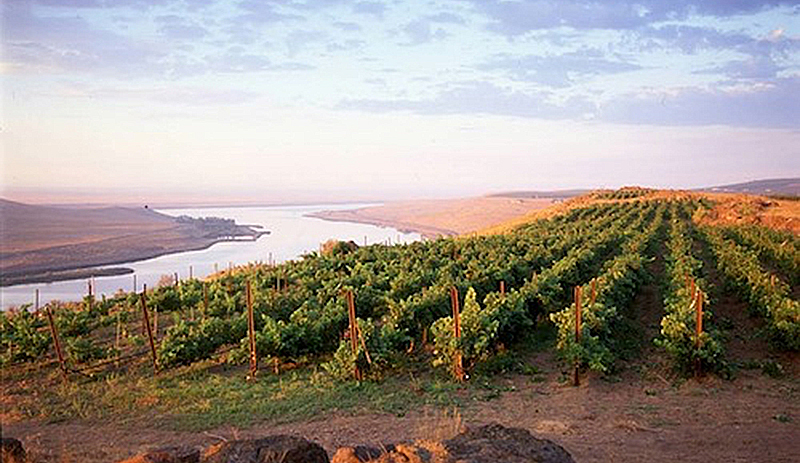 This 267-acre site, the only one actually owned by Adega, is located high on the bluffs overlooking the Columbia River, in the Horse Heaven Hills AVA in southeastern Washington, and is part of the larger Columbia Valley AVA. Elevation in this area ranges from 200 feet above sea level in the south to 1,800 feet above sea level at the northern boundary. Destiny Ridge itself sits at 850 feet. Strong winds arrive from the west via the Columbia River Gorge, reducing the likelihood of rot and fungal diseases taking hold, and keeping frost at bay. The quick-draining soil includes clay, limestone, schist (medium sized mineral rocks), and gravel, along with sandy top soils. It is exclusively planted to Cabernet Sauvignon.
This 267-acre site, the only one actually owned by Adega, is located high on the bluffs overlooking the Columbia River, in the Horse Heaven Hills AVA in southeastern Washington, and is part of the larger Columbia Valley AVA. Elevation in this area ranges from 200 feet above sea level in the south to 1,800 feet above sea level at the northern boundary. Destiny Ridge itself sits at 850 feet. Strong winds arrive from the west via the Columbia River Gorge, reducing the likelihood of rot and fungal diseases taking hold, and keeping frost at bay. The quick-draining soil includes clay, limestone, schist (medium sized mineral rocks), and gravel, along with sandy top soils. It is exclusively planted to Cabernet Sauvignon.
Delfino Vineyard, Umpqua Valley, Roseburg. Oregon 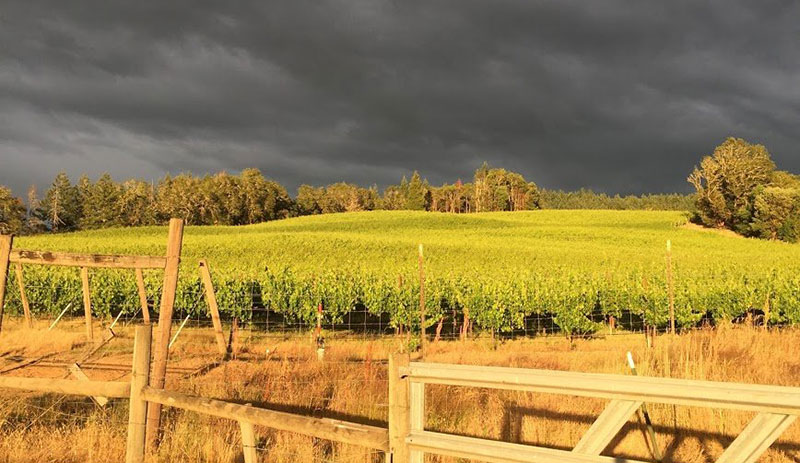
This 18-acre site is similar climatically to Spain’s Ribera del Duero, with a mix of rocky soil types. There are seven grape varieties under cultivation here: Cabernet Sauvignon, Zinfandel, Syrah, Müller Thurgau, Merlot, Dolcetto, and Tempranillo (for which Umpqua is becoming increasingly well known).
Double Canyon Vineyard, Horse Heaven Hills, Prosser, Washington
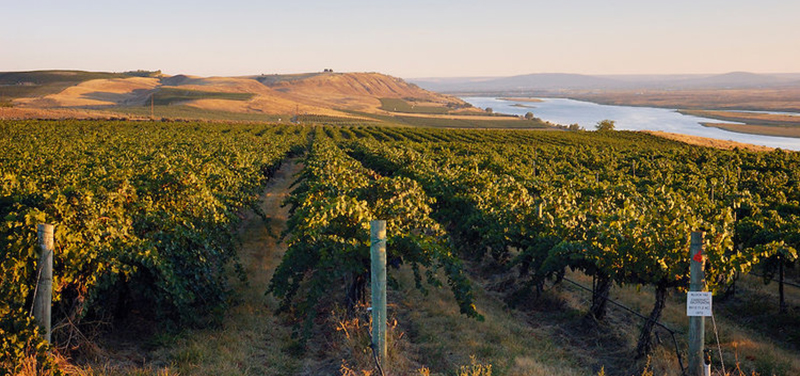 Located between Yakima Valley and the Columbia River, the 90-acre Double Canyon Vineyard has a dry desert landscape. The weather is influenced by close proximity to the Columbia River, which creates sweeping winds and other distinctive weather patterns that protect the vines from extreme temperatures, fungal disease, and pests. The soil is sandy, quick-draining loam. The vineyard is planted primarily to Bordeaux varietals and Syrah.
Located between Yakima Valley and the Columbia River, the 90-acre Double Canyon Vineyard has a dry desert landscape. The weather is influenced by close proximity to the Columbia River, which creates sweeping winds and other distinctive weather patterns that protect the vines from extreme temperatures, fungal disease, and pests. The soil is sandy, quick-draining loam. The vineyard is planted primarily to Bordeaux varietals and Syrah.
dutchman vineyard, yakima valley, Grandview, Washington
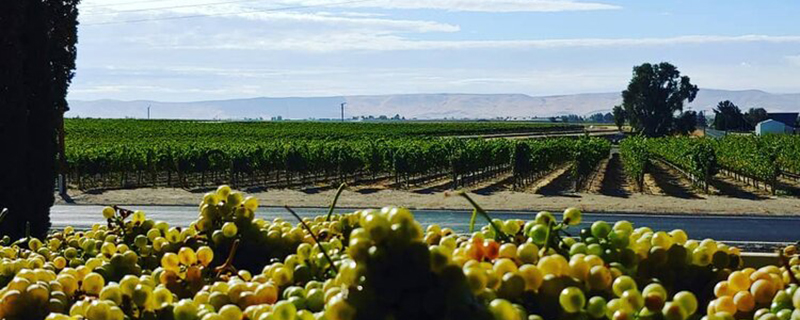 Dutchman Vineyard was planted in 1991. It is located in a very cool region in the Yakima Valley. Adega Northwest has been sourcing Alvarinho, Marsanne, Roussanne, and Riesling from here since 2017.
Dutchman Vineyard was planted in 1991. It is located in a very cool region in the Yakima Valley. Adega Northwest has been sourcing Alvarinho, Marsanne, Roussanne, and Riesling from here since 2017.
Firethorn Vineyard, Columbia Valley, Echo, Oregon
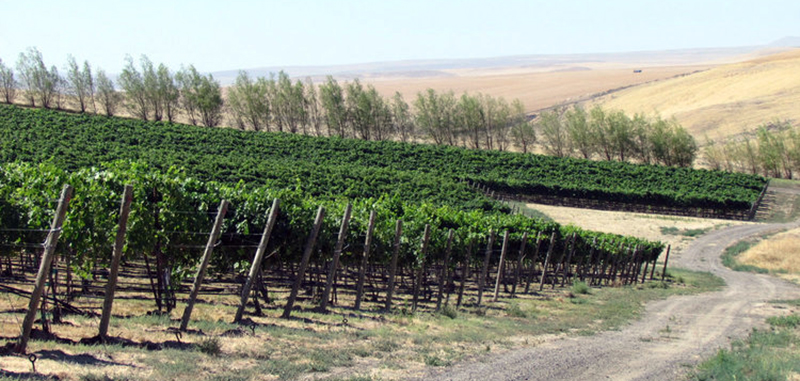
Firethorn was originally developed between 2006 and 2008 by famed NFL quarterback Drew Bledsoe under the name Flying B Vineyard. Jay and Kim Bales purchased the vineyard in 2010 and have done the farming ever since. The vineyard sits on basalt cliffs that support a layer of granite and basalt silt deposited as the Missoula floods receded at the end of the last ice age. The top layer of soil is wind-driven loess (a silt-sized sediment that is formed by the accumulation of wind-blown dust). It is planted to Cabernet Sauvignon, Cabernet Franc, Merlot, Malbec, Petit Verdot, Syrah, and Muscat.
french creek Vineyard, yakima valley, prosser, Washington
French Creek was established in 1981 with the planting of nine acres of Wente Clone Chardonnay. The vineyard is on a south-facing slope above the Yakima River, and lies at the edge of a canyon that allows for great air drainage, crucial for mitigating frost damage. The soils are mainly silt loam with weathered and unweathered basalt bedrock. Plantings are primarily Chardonnay, 28-year-old Cabernet Sauvignon, Merlot, Cabernet Franc, Syrah, Grenache, and Mourvedre. Adega NW has been sourcing Chardonnay and Cabernet Sauvignon from here since 2018.
Gamache Vineyard, Columbia Valley, Basin City, Washington
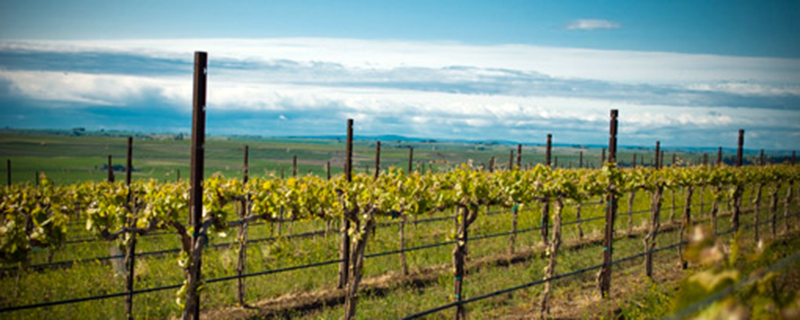 Planted by brothers Bob and Roger Gamache in 1980, this 180-acre vineyard sits up on the white bluffs overlooking Basin City to the east in the Columbia Valley AVA. The soil is primarily Warden sandy loam, with a little Kennewick sandy loam, as well as, in the northern part of the site, caliche (a hardened natural cement of calcium carbonate) about 12 inches down. The property is planted to Riesling, Chardonnay, Roussanne, Viognier, Sauvignon Blanc, Pinot Gris, Cabernet Sauvignon, Merlot, Cabernet Franc, Syrah, and Malbec.
Planted by brothers Bob and Roger Gamache in 1980, this 180-acre vineyard sits up on the white bluffs overlooking Basin City to the east in the Columbia Valley AVA. The soil is primarily Warden sandy loam, with a little Kennewick sandy loam, as well as, in the northern part of the site, caliche (a hardened natural cement of calcium carbonate) about 12 inches down. The property is planted to Riesling, Chardonnay, Roussanne, Viognier, Sauvignon Blanc, Pinot Gris, Cabernet Sauvignon, Merlot, Cabernet Franc, Syrah, and Malbec.
Kamiak Vineyard, Columbia Valley, Pasco, Washington
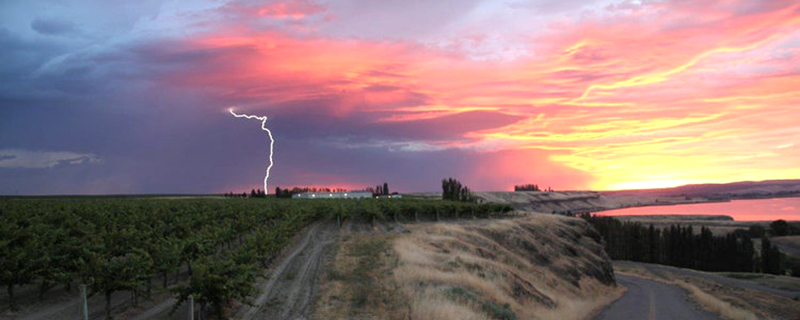 Established in the mid-1980s by Jeff Gordon of Gordon Estate Winery, the 100-acre Kamiak Vineyard is south-facing, and is perched 620 feet above sea-level along the Snake River. The vineyard has excellent air drainage and benefits from the river’s moderating influence. It has a unique volcanic soil breakdown that includes basalt, sandy loam, clay loam. and gravelly loam. It is planted with Cabernet Sauvignon, Merlot, Syrah, Chardonnay, Sauvignon Blanc and Gewürztraminer, with a few small lots set aside for Tempranillo and Malbec.
Established in the mid-1980s by Jeff Gordon of Gordon Estate Winery, the 100-acre Kamiak Vineyard is south-facing, and is perched 620 feet above sea-level along the Snake River. The vineyard has excellent air drainage and benefits from the river’s moderating influence. It has a unique volcanic soil breakdown that includes basalt, sandy loam, clay loam. and gravelly loam. It is planted with Cabernet Sauvignon, Merlot, Syrah, Chardonnay, Sauvignon Blanc and Gewürztraminer, with a few small lots set aside for Tempranillo and Malbec.
Red heaven Vineyard, red mountain, Benton city, Washington
The many varieties planted here include Cabernet Sauvignon, Petite Sirah (aka Durif), Tinta Cão, Souzão (aka Vinhão), Touriga Nacional, Tempranillo (aka Valdepeñas), Counoise, Grenache, Mourvèdre (aka Mataro), Syrah, Merlot, Zinfandel, and Barbera. Adega Northwest has been sourcing Rhone and Portuguese varieties from Red Heaven since 2017.
Two Blonds, Yakima Valley, Zillah, Washington
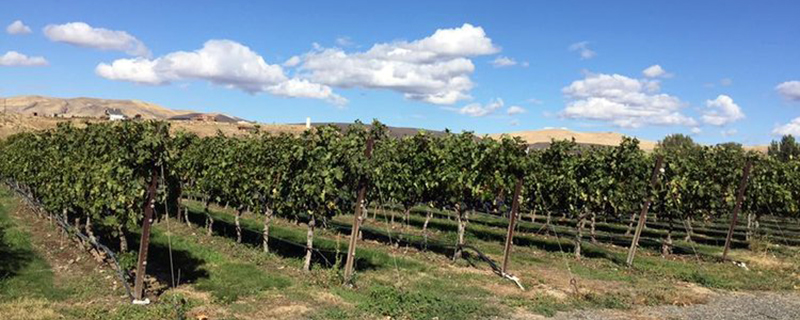 This is the estate vineyard of Andrew Will Winery. Two Blonds, named for proprietor Chris Camarda’s late wife, Annie, who was a 6’2” blond, and Melody, the also-blond wife of vineyard partner Bill Fleckenstein, it was planted in 2000 with Cabernet Sauvignon, Merlot, Cabernet Franc, and Malbec. The soils of the 30 planted acres are silty loams.
This is the estate vineyard of Andrew Will Winery. Two Blonds, named for proprietor Chris Camarda’s late wife, Annie, who was a 6’2” blond, and Melody, the also-blond wife of vineyard partner Bill Fleckenstein, it was planted in 2000 with Cabernet Sauvignon, Merlot, Cabernet Franc, and Malbec. The soils of the 30 planted acres are silty loams.
Upland Vineyard, Snipes Mountain, Columbia Valley, sunnyside, Washington
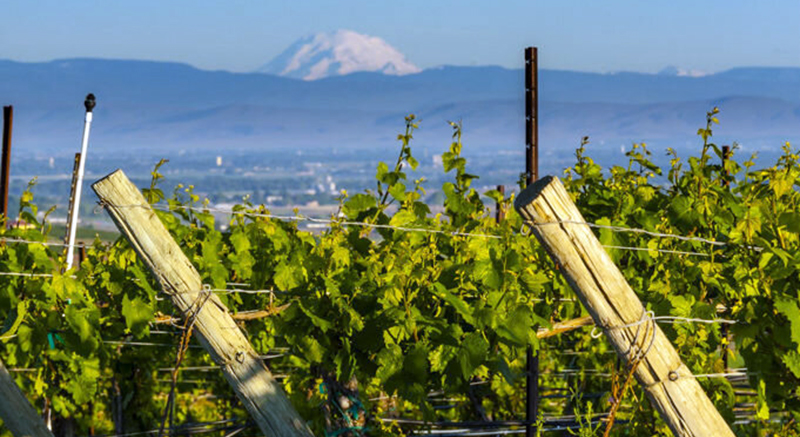 Farming wine grapes since 1968, four generations of the Newhouse family have helped maintain the Upland legacy, which started over 100 years ago. Originally planted by William B. Bridgman in 1917, Snipes Mountain is widely considered the birth place of Washington wine. Today that original vineyard is still bearing fruit, and the vines’ longevity is a testament to the favorable weather conditions there. With an elevation that ranges from 750 to 1300 feet, the fecund Upland is able to grow over 35 varieties of wine grapes. (To be clear, Upland is in Washington, and on Snipes Mountain, but the snow-covered promontory in the background is Oregon’s Mt. Hood, seen looking to the southwest.)
Farming wine grapes since 1968, four generations of the Newhouse family have helped maintain the Upland legacy, which started over 100 years ago. Originally planted by William B. Bridgman in 1917, Snipes Mountain is widely considered the birth place of Washington wine. Today that original vineyard is still bearing fruit, and the vines’ longevity is a testament to the favorable weather conditions there. With an elevation that ranges from 750 to 1300 feet, the fecund Upland is able to grow over 35 varieties of wine grapes. (To be clear, Upland is in Washington, and on Snipes Mountain, but the snow-covered promontory in the background is Oregon’s Mt. Hood, seen looking to the southwest.)
Weinbau Vineyard, Wahluke Slope, Washington
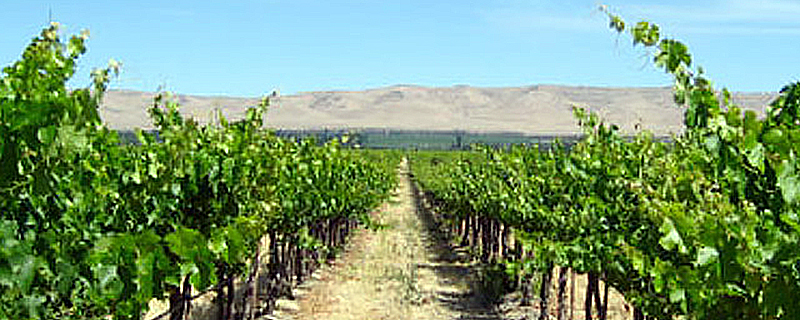 With views of the Rattlesnake Mountains to the south and the Saddle Mountains to the north, Weinbau Vineyard slopes gently south, with elevations ranging from 710 to 950 feet. It is a relatively warm site, with excellent air drainage, and the soil is dominated by Kennewick silt loam. This 460-acre property was originally planted to Riesling, Chardonnay, and Gewurztraminer in 1981. Cabernet Sauvignon, Syrah, Malbec, Mourvedre, Merlot, Carmenere, Grenache, and Cabernet Franc were added in subsequent years.
With views of the Rattlesnake Mountains to the south and the Saddle Mountains to the north, Weinbau Vineyard slopes gently south, with elevations ranging from 710 to 950 feet. It is a relatively warm site, with excellent air drainage, and the soil is dominated by Kennewick silt loam. This 460-acre property was originally planted to Riesling, Chardonnay, and Gewurztraminer in 1981. Cabernet Sauvignon, Syrah, Malbec, Mourvedre, Merlot, Carmenere, Grenache, and Cabernet Franc were added in subsequent years.
[SOME OF] THE WINES
Adega Northwest normally produces between 2,000 and 2,500 cases annually. Unfortunately, this year COVID-19 has forced a retrenchment back to 1,500. Although Adega Northwest’s production of each selection is quite limited, and therefor harder to find, they are very reasonably priced and are worth seeking out.
Interestingly, Adega, as well as another producer I have recently encountered, doesn’t use a foil at the top of the bottle. Cowin shared, “Foil doesn’t do much other than being for aesthetics. I prefer the natural look of the cork. It also makes it easier to tell if there is a cork malfunction or a storage issue. On my single vineyard wines I do wax just the very top of the cork. However, you can still see all the sides of the cork in bottle.”
The cellar image on the labels was inspired by a picture of a classic Portuguese Adega from an original design by Cowin.
Adega Northwest Double Canyon Vineyard Syrah 2016
This 100% Syrah was fermented in stainless steel, followed by 22 months of barrel aging in 500-liter puncheons made of 100% French oak, 30% of which were new. A semi-transparent dark purple, it opens with aromas of dark fruit, mostly wild blueberries and mountain blackberries, and a hint of camphor (which receeds after the bottle has been open an hour or so). The lean palate follows with muted fruit, especially tart cherry, with some leather thrown in. It all wraps up with a medium-length finish. ABV is 14.6%, and 135 cases were made.
Adega Northwest Tempranillo 2015
Sourced from the Delfino vineyard, this wine is 10% Syrah and 90% Tempranillo. The latter is an important red-wine grape in Spain, and two Spanish clones of Tempranillo were used: Tinto del Pais (Rioja Clone) and Tinto del Toro (Toro Clone). It was fermented in stainless steel, followed by 20 months of barrel aging in 100% French oak. It is dark purple, with a nose of dark fruits plus black olive and leather. The full-bodied palate features flavors of tart cherry, cocoa, tobacco, and earth. There is lively but unobtrusive acidity, and a relatively short but dry finish. ABV is 13.8%, and 100 cases were produced.
Adega Northwest Weinbau Vineyard | Block 10 Cabernet Sauvignon 2015
This wine is 100% Cabernet Sauvignon. It was fermented in stainless steel and then saw 21 months in French oak barrels, 40% of which were new. It is dark purple, but a bit more transparent than is common for Cabernet Sauvignon. The nose is classic Cabernet, with big aromas of blackberry, blueberry, and cassis. These continue on the palate, supported by cedar notes, bracing tannins, and good acidity. It all wraps up in a nice long finish. The ABV comes in at 14.6%, and 125 cases were made.
Adega Northwest Eremita White Blend 2018
The fruit for this blend of 70% Marsanne and 30% Roussanne came from the Dutchman vineyard. After barrel fermentation, it underwent full malolactic fermentation and aging, all in neutral French oak. The wine pours a hazy medium yellow. The nose is predominantly grapefruit (with hints of orange marmalade and apricot), and this dominates on the round and creamy palate as well, supported by Seville orange. There is plenty of zippy acidity. The ABV is 13.3% and 150 cases were made.
Adega Northwest Alvarinho 2018
The type of low-yielding, thick-skinned grapes from which this wine was made originally hailed from Portugal’s Vinho Verde. It is also cultivated in Spain’s Galicia region, where it is known as Albarino. Adega NW sourced the fruit from the Dutchman vineyard. The wine is all Alvarinho, which underwent a cool, extended fermentation in stainless steel. It spent further stabilization (but perhaps not enough; see note below) and aging in stainless steel as well. It is a medium yellow in the glass, with a hint of pink. The nose offers up honeydew, cantaloupe, and peach. The palate features a full, creamy mouthfeel, with flavors of those same melons, joined by Seville oranges. It’s all backed up up by plenty of racy acidity. The ABV is 13.5%, and 250 cases were produced, and although still quite modest, it’s a relatively high number for Adega NW.
Note: when I finished my sample bottle after 24 hours in the refrigerator, some tartrate sediment had precipitated out. While this doesn’t impact the quality of a wine, it is an inconvenience, and you should consider decanting through a filter before serving, just in case.
Adega Northwest Chardonnay 2018
This 100% Chardonnay was sourced from the French Creek vineyard. It underwent barrel fermentation, followed by partial malolactic fermentation and aging, all in in neutral French oak. It is crystal-clear, medium-pale straw in color. It is mildly aromatic, with scents of honeysuckle and brioche. The creamy palate features Meyer lemon and grapefruit, balanced by harmonious acidity and hints of vanilla and oak. It closes with a medium-length finish. The ABV is 14.5% and 100 cases were made.
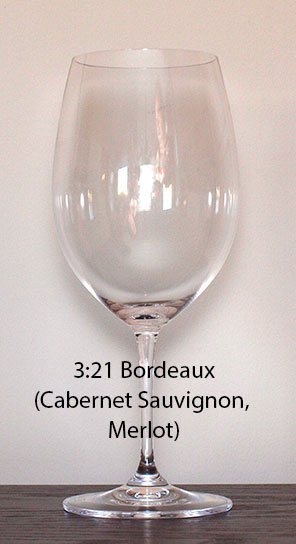
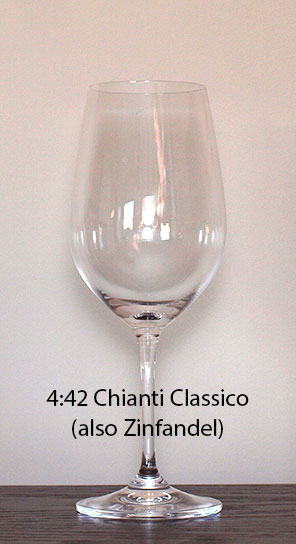
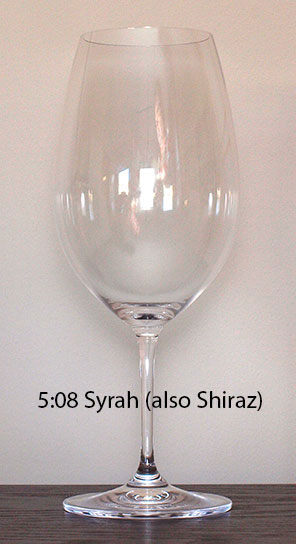
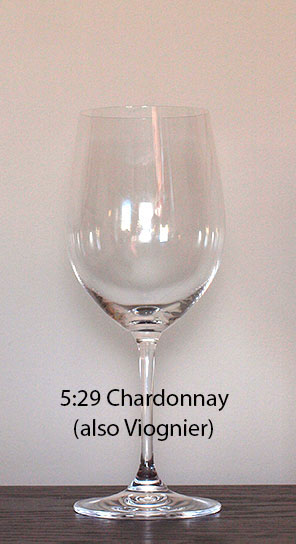
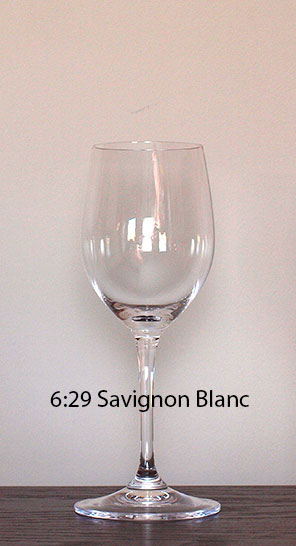
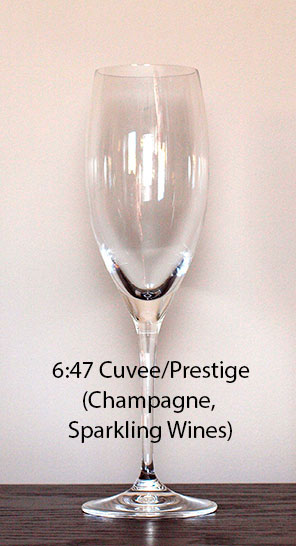
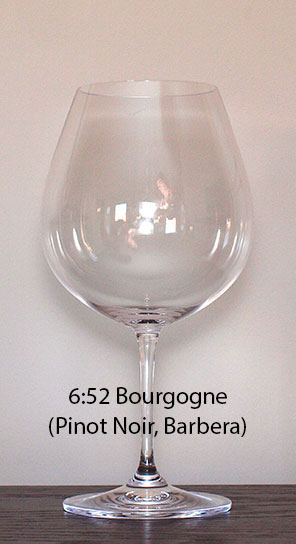

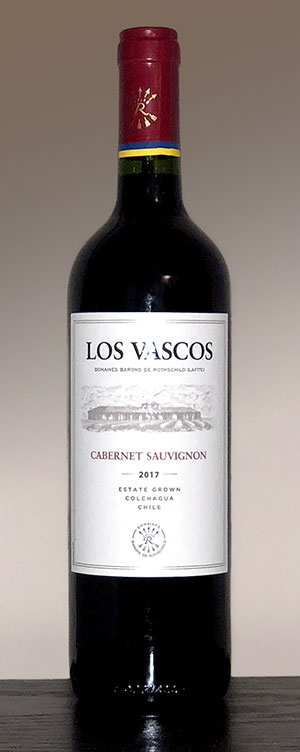
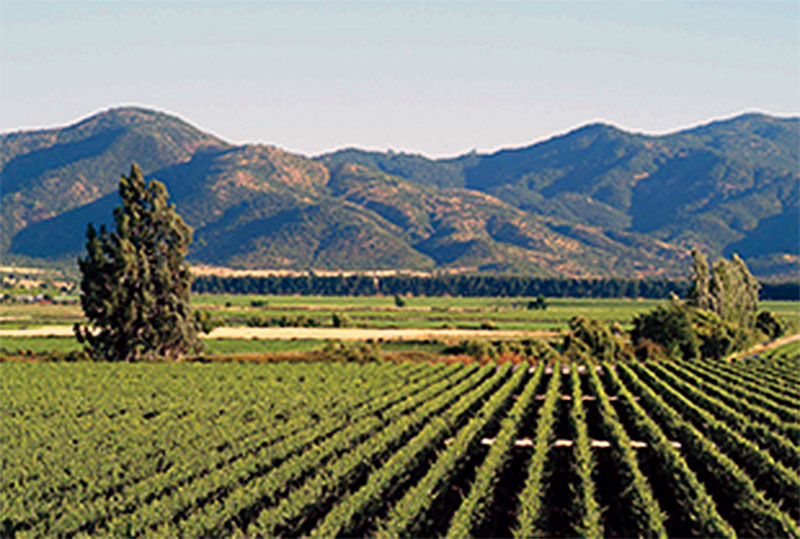 Having by now been expanded to 1,580 acres [640 hectares], the vineyard is one of the largest vineyards in the central
Having by now been expanded to 1,580 acres [640 hectares], the vineyard is one of the largest vineyards in the central 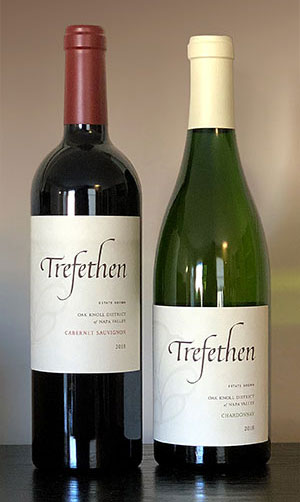
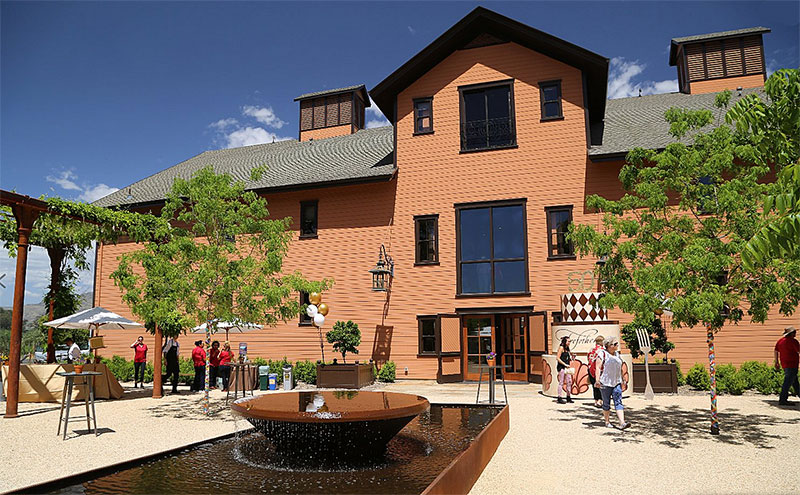
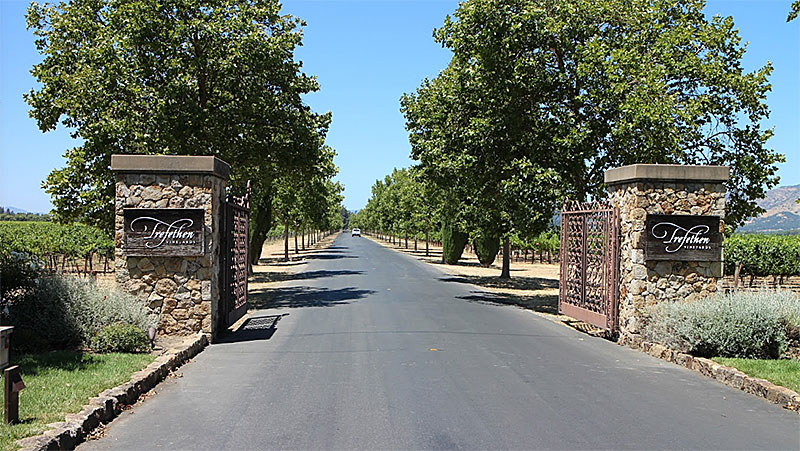
 beginning. Katie had originally used it on signage in her garden areas, and the winery put it on the bottle capsules from very early on. It was long referred to as the “Welsh Flower,” thinking that Katie had tapped into her Welsh heritage. But later research couldn’t find any Welsh history for the mark, so its origins remain a mystery, and it is now just called the “Trefethen Flower” instead.
beginning. Katie had originally used it on signage in her garden areas, and the winery put it on the bottle capsules from very early on. It was long referred to as the “Welsh Flower,” thinking that Katie had tapped into her Welsh heritage. But later research couldn’t find any Welsh history for the mark, so its origins remain a mystery, and it is now just called the “Trefethen Flower” instead.
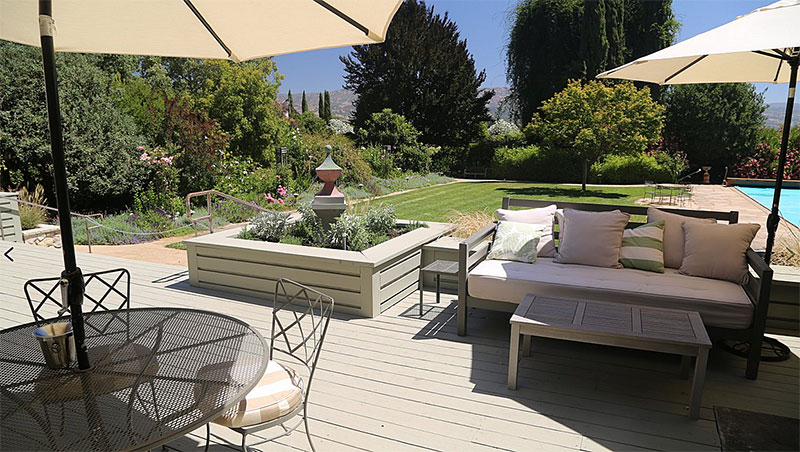
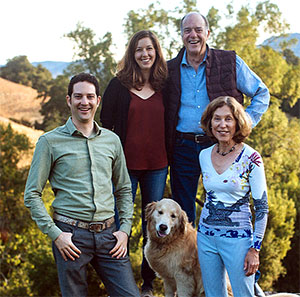 largely stepped back from day-to-day oversight, and the third generation of the family is now deeply involved in the operation. Son Lorenzo focuses on sales and marketing, and daughter Hailey on vineyards and employees.
largely stepped back from day-to-day oversight, and the third generation of the family is now deeply involved in the operation. Son Lorenzo focuses on sales and marketing, and daughter Hailey on vineyards and employees.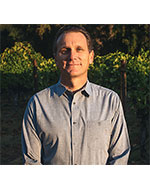 but steadily increased his involvement over the years that have followed. He is now fully responsible for all aspects of the company’s operations and strategy, and was named named CEO in 2015. He had this to say about Trefethen, ““As a true estate winery, we have the unique opportunity to bring integrity to every step of the process, from the soil to the table. My entire focus these days is on cultivating this extended family – and when we succeed, you can not only taste it in the wine, you can feel it.”
but steadily increased his involvement over the years that have followed. He is now fully responsible for all aspects of the company’s operations and strategy, and was named named CEO in 2015. He had this to say about Trefethen, ““As a true estate winery, we have the unique opportunity to bring integrity to every step of the process, from the soil to the table. My entire focus these days is on cultivating this extended family – and when we succeed, you can not only taste it in the wine, you can feel it.”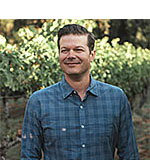
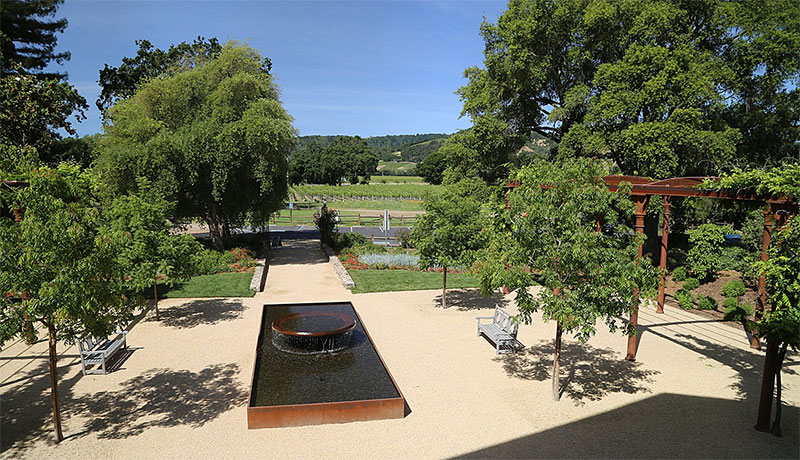
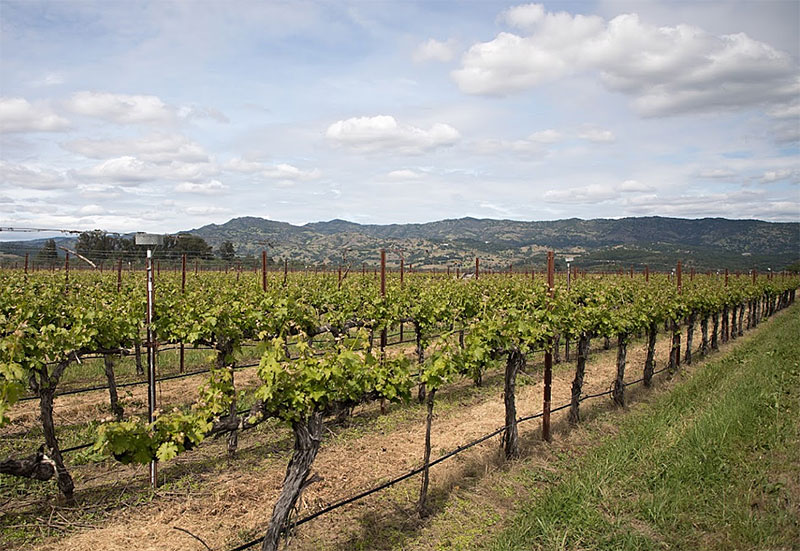
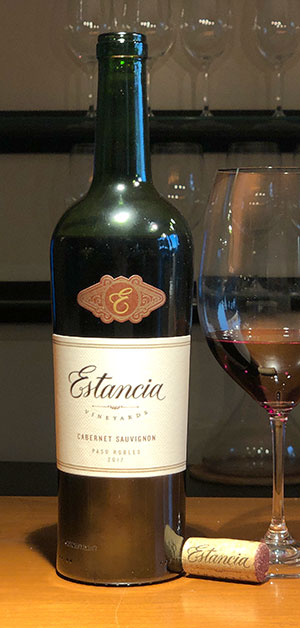
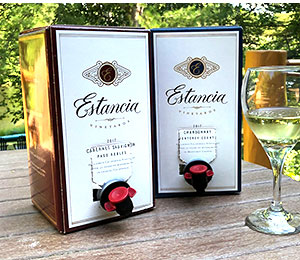 delicious and reliable. And I buy it by the case; the most recent one cost $84. Yep, that’s $7 a bottle, folks. Although harder to find, it’s available in a four-bottle-equivalent box for about $30 as well.
delicious and reliable. And I buy it by the case; the most recent one cost $84. Yep, that’s $7 a bottle, folks. Although harder to find, it’s available in a four-bottle-equivalent box for about $30 as well.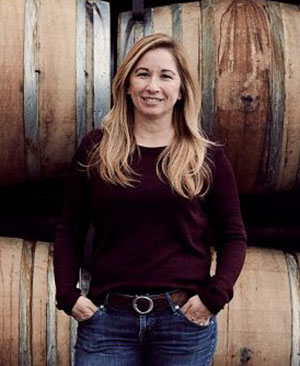
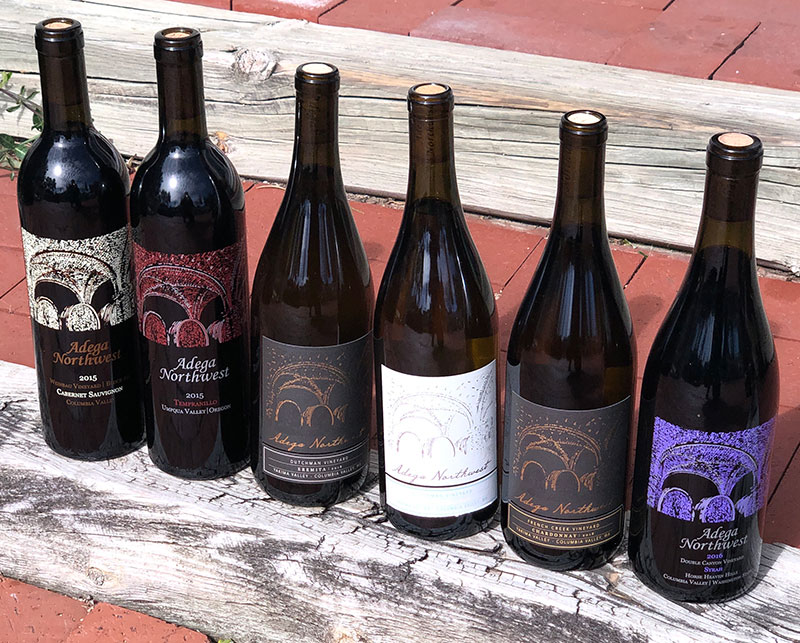
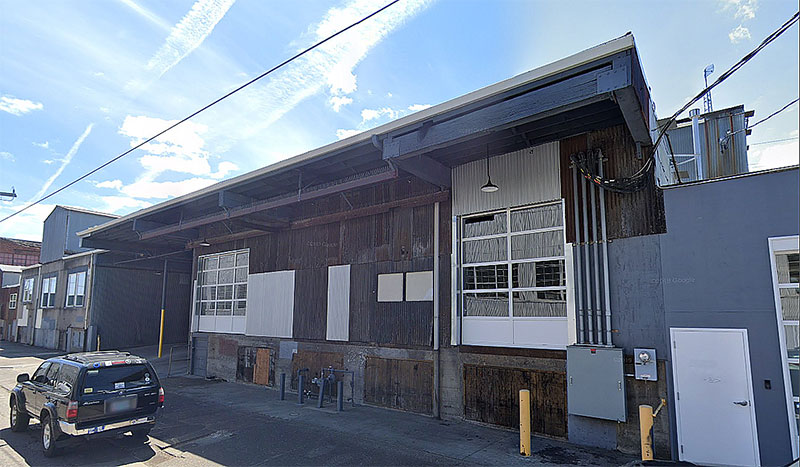
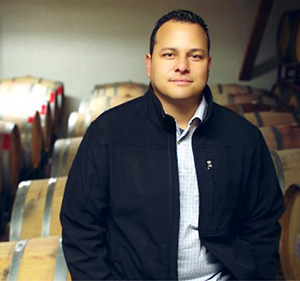
 This 267-acre site, the only one actually owned by Adega, is located high on the bluffs overlooking the Columbia River, in the Horse Heaven Hills
This 267-acre site, the only one actually owned by Adega, is located high on the bluffs overlooking the Columbia River, in the Horse Heaven Hills 
 Located between Yakima Valley and the Columbia River, the 90-acre Double Canyon Vineyard has a dry desert landscape. The weather is influenced by close proximity to the Columbia River, which creates sweeping winds and other distinctive weather patterns that protect the vines from extreme temperatures, fungal disease, and pests. The soil is sandy, quick-draining loam. The vineyard is planted primarily to Bordeaux varietals and Syrah.
Located between Yakima Valley and the Columbia River, the 90-acre Double Canyon Vineyard has a dry desert landscape. The weather is influenced by close proximity to the Columbia River, which creates sweeping winds and other distinctive weather patterns that protect the vines from extreme temperatures, fungal disease, and pests. The soil is sandy, quick-draining loam. The vineyard is planted primarily to Bordeaux varietals and Syrah. Dutchman Vineyard was planted in 1991. It is located in a very cool region in the Yakima Valley. Adega Northwest has been sourcing Alvarinho, Marsanne, Roussanne, and Riesling from here since 2017.
Dutchman Vineyard was planted in 1991. It is located in a very cool region in the Yakima Valley. Adega Northwest has been sourcing Alvarinho, Marsanne, Roussanne, and Riesling from here since 2017.
 Planted by brothers Bob and Roger Gamache in 1980, this 180-acre vineyard sits up on the white bluffs overlooking Basin City to the east in the Columbia Valley AVA. The soil is primarily Warden sandy loam, with a little Kennewick sandy loam, as well as, in the northern part of the site, caliche (a hardened natural cement of calcium carbonate) about 12 inches down. The property is planted to Riesling, Chardonnay, Roussanne, Viognier, Sauvignon Blanc, Pinot Gris, Cabernet Sauvignon, Merlot, Cabernet Franc, Syrah, and Malbec.
Planted by brothers Bob and Roger Gamache in 1980, this 180-acre vineyard sits up on the white bluffs overlooking Basin City to the east in the Columbia Valley AVA. The soil is primarily Warden sandy loam, with a little Kennewick sandy loam, as well as, in the northern part of the site, caliche (a hardened natural cement of calcium carbonate) about 12 inches down. The property is planted to Riesling, Chardonnay, Roussanne, Viognier, Sauvignon Blanc, Pinot Gris, Cabernet Sauvignon, Merlot, Cabernet Franc, Syrah, and Malbec. Established in the mid-1980s by Jeff Gordon of
Established in the mid-1980s by Jeff Gordon of  This is the estate vineyard of
This is the estate vineyard of  Farming wine grapes since 1968, four generations of the Newhouse family have helped maintain the Upland legacy, which started over 100 years ago. Originally planted by William B. Bridgman in 1917, Snipes Mountain is widely considered the birth place of Washington wine. Today that original vineyard is still bearing fruit, and the vines’ longevity is a testament to the favorable weather conditions there. With an elevation that ranges from 750 to 1300 feet, the fecund Upland is able to grow over 35 varieties of wine grapes. (To be clear, Upland is in Washington, and on Snipes Mountain, but the snow-covered promontory in the background is Oregon’s Mt. Hood, seen looking to the southwest.)
Farming wine grapes since 1968, four generations of the Newhouse family have helped maintain the Upland legacy, which started over 100 years ago. Originally planted by William B. Bridgman in 1917, Snipes Mountain is widely considered the birth place of Washington wine. Today that original vineyard is still bearing fruit, and the vines’ longevity is a testament to the favorable weather conditions there. With an elevation that ranges from 750 to 1300 feet, the fecund Upland is able to grow over 35 varieties of wine grapes. (To be clear, Upland is in Washington, and on Snipes Mountain, but the snow-covered promontory in the background is Oregon’s Mt. Hood, seen looking to the southwest.) With views of the Rattlesnake Mountains to the south and the Saddle Mountains to the north, Weinbau Vineyard slopes gently south, with elevations ranging from 710 to 950 feet. It is a relatively warm site, with excellent air drainage, and the soil is dominated by Kennewick silt loam. This 460-acre property was originally planted to Riesling, Chardonnay, and Gewurztraminer in 1981. Cabernet Sauvignon, Syrah, Malbec, Mourvedre, Merlot, Carmenere, Grenache, and Cabernet Franc were added in subsequent years.
With views of the Rattlesnake Mountains to the south and the Saddle Mountains to the north, Weinbau Vineyard slopes gently south, with elevations ranging from 710 to 950 feet. It is a relatively warm site, with excellent air drainage, and the soil is dominated by Kennewick silt loam. This 460-acre property was originally planted to Riesling, Chardonnay, and Gewurztraminer in 1981. Cabernet Sauvignon, Syrah, Malbec, Mourvedre, Merlot, Carmenere, Grenache, and Cabernet Franc were added in subsequent years.
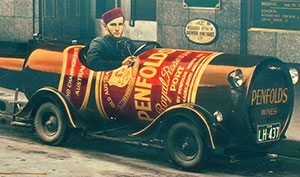

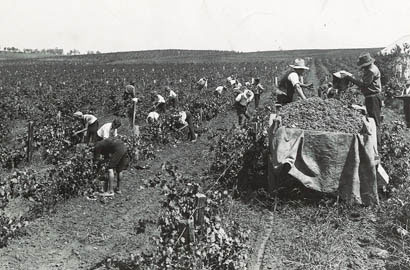
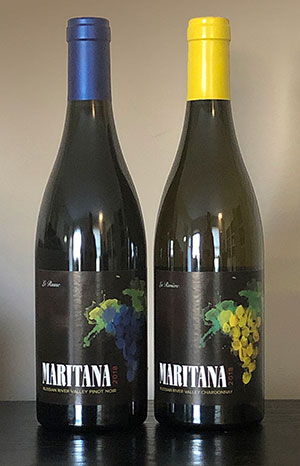
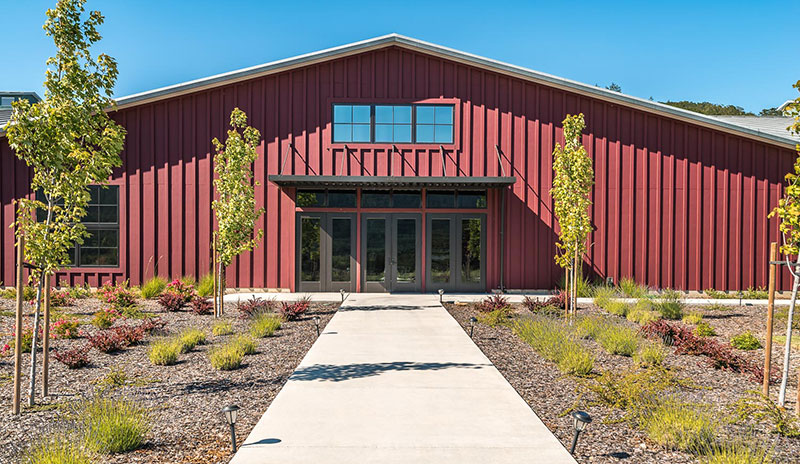 Since Maritana is a small, personal project, Patz needed to find a production partner. A fortuitous lunch with Adam Lee of
Since Maritana is a small, personal project, Patz needed to find a production partner. A fortuitous lunch with Adam Lee of 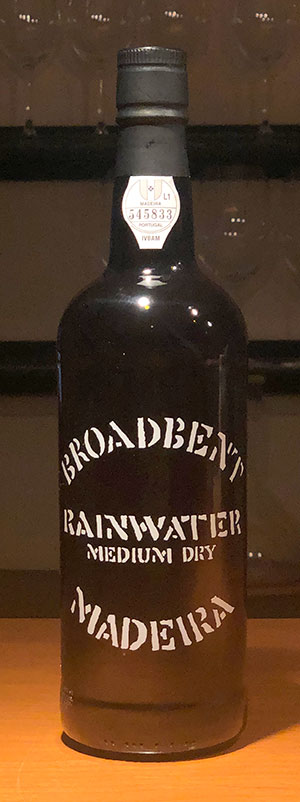
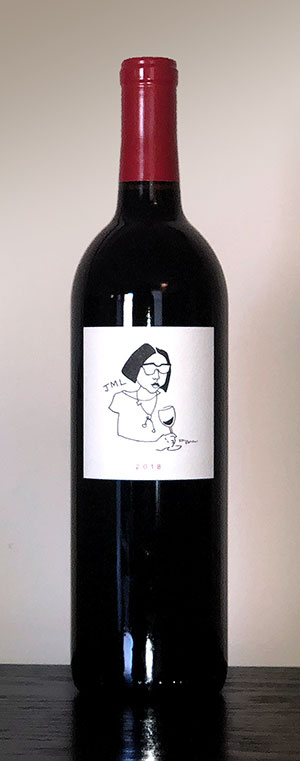
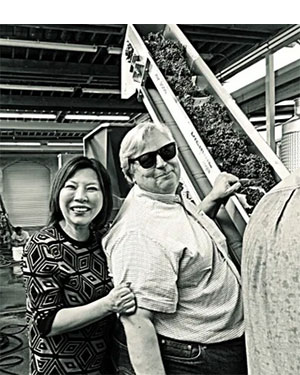 Patz left Patz & Hall in 2017 to establish the Donald Patz Wine Group with his wife and business partner Jung Min Lee. The project oversees three distinct labels:
Patz left Patz & Hall in 2017 to establish the Donald Patz Wine Group with his wife and business partner Jung Min Lee. The project oversees three distinct labels: 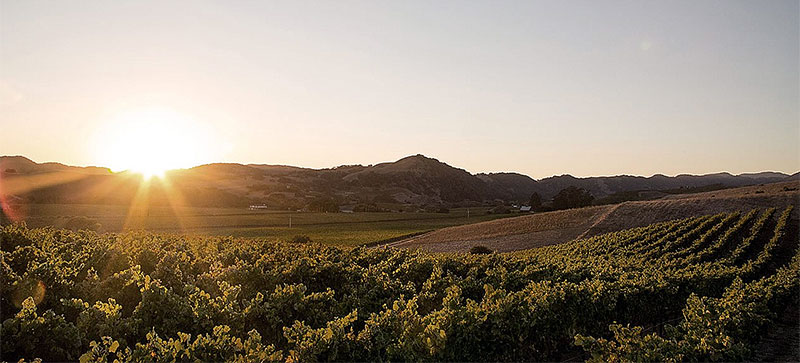
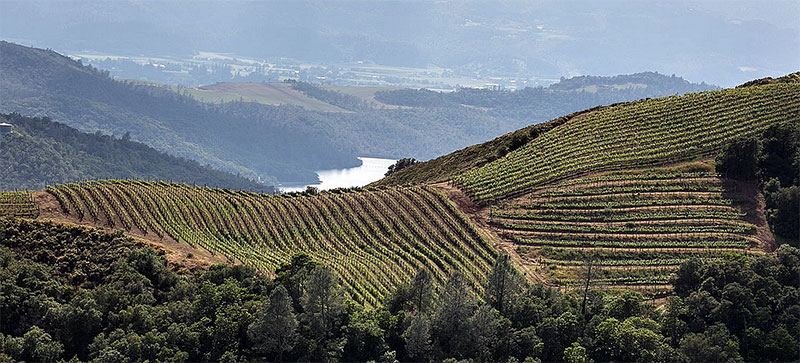 This vineyard is perched high on the hills above Lake Hennessey to the east of St. Helena. It was planted in 1998. The land here is a unique mixture of well- to excessively-drained sedimentary and metamorphic soils underlain by a bedrock of Franciscan complex. Silty clay loams with varying depths, mixtures of gravels, and fractured rock undulate among the steep slopes. The vineyard is a series of small plots that run along the ridge lines, and is owned by Judy Jordan of
This vineyard is perched high on the hills above Lake Hennessey to the east of St. Helena. It was planted in 1998. The land here is a unique mixture of well- to excessively-drained sedimentary and metamorphic soils underlain by a bedrock of Franciscan complex. Silty clay loams with varying depths, mixtures of gravels, and fractured rock undulate among the steep slopes. The vineyard is a series of small plots that run along the ridge lines, and is owned by Judy Jordan of 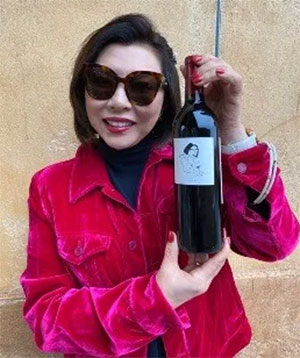
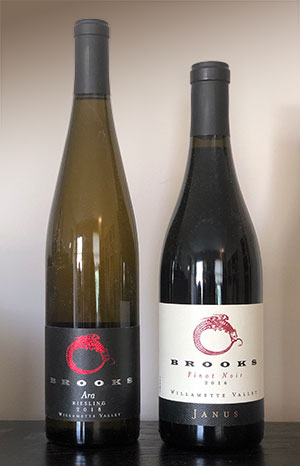
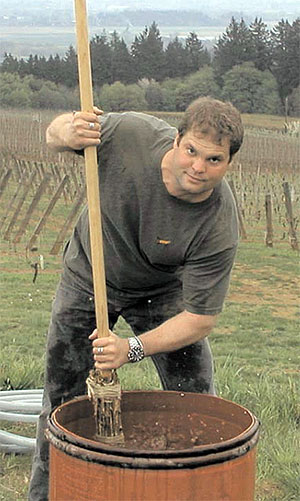 The free-spirited Jimi Brooks began his career by spending eight years throughout Europe, particularly Beaujolais, learning his craft in the vineyards and wineries there. After that sojourn, he returned to Oregon committed to a life in wine, based on his own intuition as well as holistic and biodynamic farming practices, still a relative novelty just over twenty years ago. He continued to hone his skills with winemaking stints at
The free-spirited Jimi Brooks began his career by spending eight years throughout Europe, particularly Beaujolais, learning his craft in the vineyards and wineries there. After that sojourn, he returned to Oregon committed to a life in wine, based on his own intuition as well as holistic and biodynamic farming practices, still a relative novelty just over twenty years ago. He continued to hone his skills with winemaking stints at 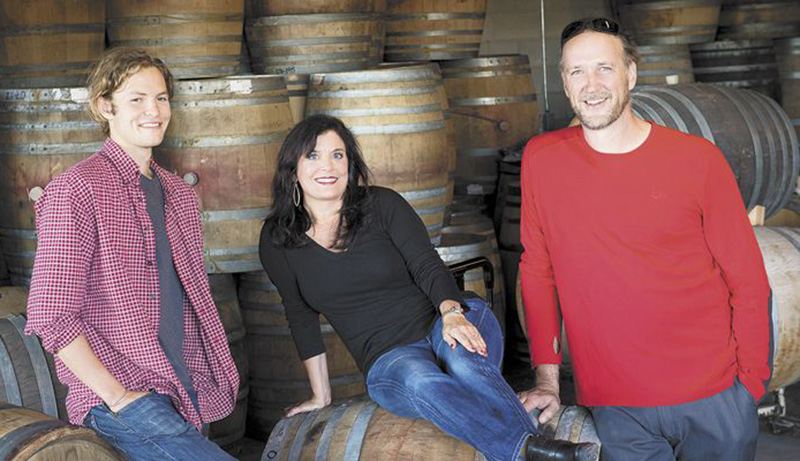
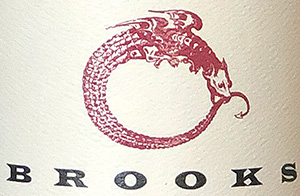 Brooks Wines’ distinctive logo is an ouroboros (or uroboros). It is an ancient symbol depicting a serpent or dragon eating its own tail to assure its future existence. Originating in ancient Egyptian iconography, the ouroboros entered western tradition via Greek magic and mysticism. Heuck shared, “We like to talk about it symbolizing the circle of life, continuation. My brother got it as a tattoo on his left shoulder in the early ’90s. It meant so much to him that he decided to make it his wine label.”
Brooks Wines’ distinctive logo is an ouroboros (or uroboros). It is an ancient symbol depicting a serpent or dragon eating its own tail to assure its future existence. Originating in ancient Egyptian iconography, the ouroboros entered western tradition via Greek magic and mysticism. Heuck shared, “We like to talk about it symbolizing the circle of life, continuation. My brother got it as a tattoo on his left shoulder in the early ’90s. It meant so much to him that he decided to make it his wine label.”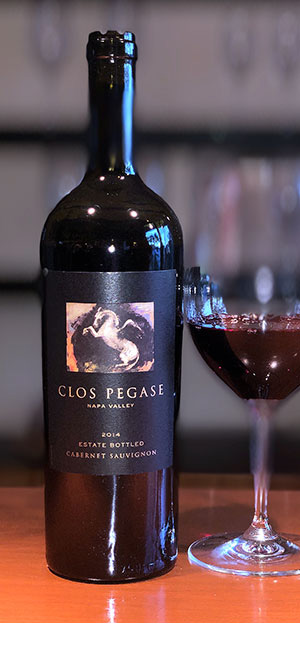
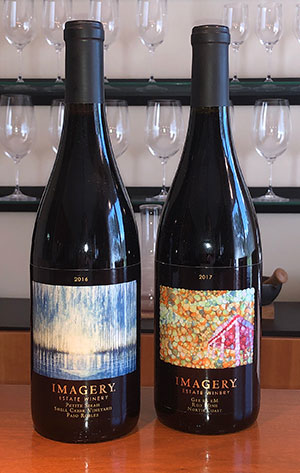
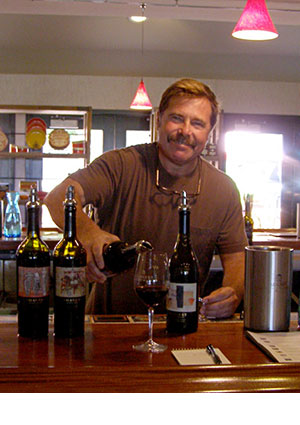
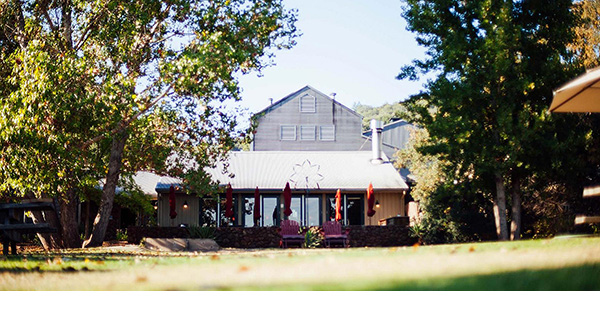 In 1986, winemaker Joe Benziger first partnered with artist Bob Nugent to launch the Imagery Series of wines in a converted brewery. This pairing of wine and art continues to this day, and permeates every aspect of Imagery Winery, including unique artwork replicated on every label. The winery’s dedicated on-site art gallery features 500 works from over 300 notable contemporary artists. Usually, between 60 and 150 pieces are on view in the gallery at any one time. Contributing artists have been selected from around the world, including: Sol LeWitt of Connecticut, Shoichi Ida of Japan, William Wiley of California, Goncalo Ivo of Brazil, David Nash of Wales, and Judy Pfaff, Pat Steir, and Terry Winters of New York. The artists are specially commissioned by Imagery to create a new and original piece; unsolicited submissions from others are not considered. At any given time, as many as 35 artists are working on pieces that will appear on future Imagery wine labels. Of the 200 or so artists reviewed each year, only five are actually offered a commission. The artists are not limited by size, medium, or content, except for one requirement. It can be either representational or abstract, but every image must include the
In 1986, winemaker Joe Benziger first partnered with artist Bob Nugent to launch the Imagery Series of wines in a converted brewery. This pairing of wine and art continues to this day, and permeates every aspect of Imagery Winery, including unique artwork replicated on every label. The winery’s dedicated on-site art gallery features 500 works from over 300 notable contemporary artists. Usually, between 60 and 150 pieces are on view in the gallery at any one time. Contributing artists have been selected from around the world, including: Sol LeWitt of Connecticut, Shoichi Ida of Japan, William Wiley of California, Goncalo Ivo of Brazil, David Nash of Wales, and Judy Pfaff, Pat Steir, and Terry Winters of New York. The artists are specially commissioned by Imagery to create a new and original piece; unsolicited submissions from others are not considered. At any given time, as many as 35 artists are working on pieces that will appear on future Imagery wine labels. Of the 200 or so artists reviewed each year, only five are actually offered a commission. The artists are not limited by size, medium, or content, except for one requirement. It can be either representational or abstract, but every image must include the 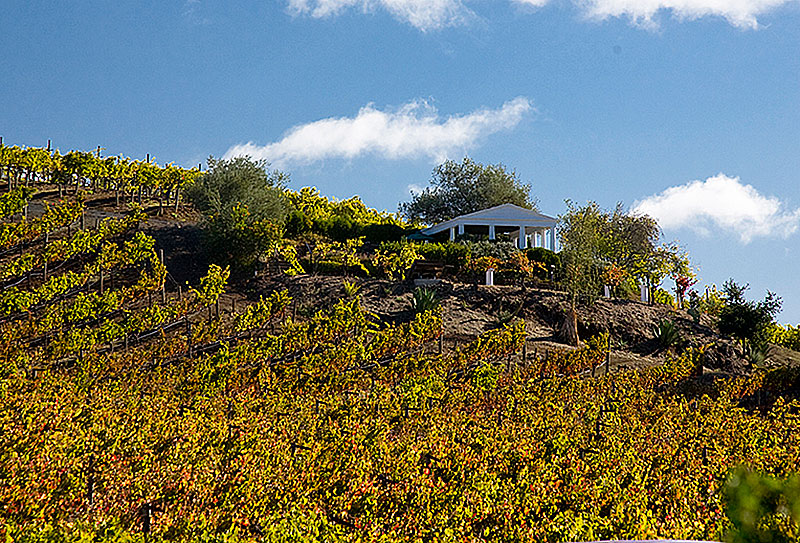
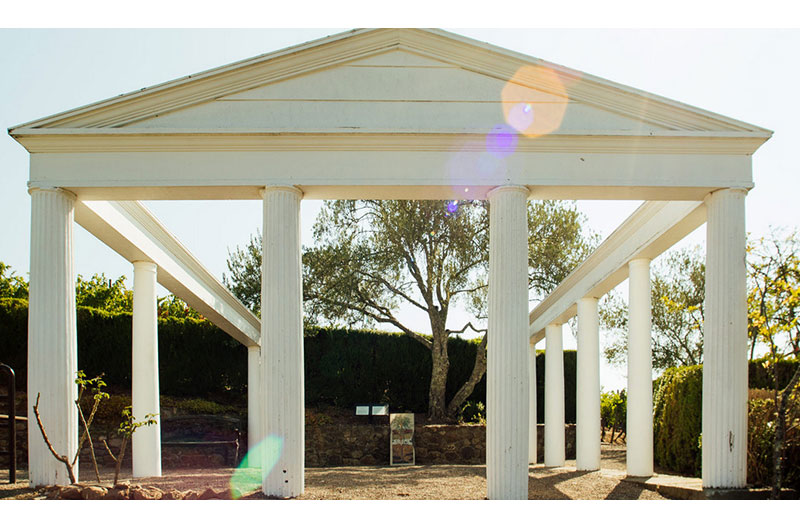
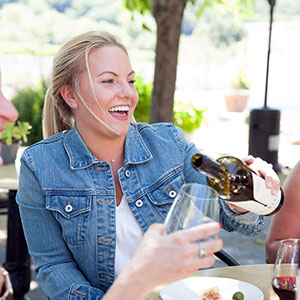 In December 2017, Joe Benziger retired, and his daughter Jamie took over as second-generation winemaker. She was named the 2019 Best Woman Winemaker in the International Women’s Wine Competition, and was also included on Wine Enthusiast’s list of 40 Under 40 Tastemakers.
In December 2017, Joe Benziger retired, and his daughter Jamie took over as second-generation winemaker. She was named the 2019 Best Woman Winemaker in the International Women’s Wine Competition, and was also included on Wine Enthusiast’s list of 40 Under 40 Tastemakers.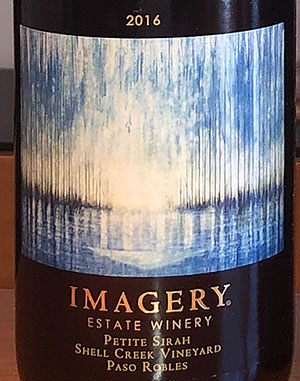 The label artist is Robin Denevan of San Francisco, California. The image is part of Denevan’s River Series, and is an encaustic painting, a mixed media technique that involves using heated beeswax to which colored pigments have been added. The liquid/paste is then applied to a surface — usually prepared wood, although canvas and other materials are also used. The term is derived from Greek, meaning a burning in. A subtle reflection of the “Parthenon” is shown in the water in the bottom third of the picture.
The label artist is Robin Denevan of San Francisco, California. The image is part of Denevan’s River Series, and is an encaustic painting, a mixed media technique that involves using heated beeswax to which colored pigments have been added. The liquid/paste is then applied to a surface — usually prepared wood, although canvas and other materials are also used. The term is derived from Greek, meaning a burning in. A subtle reflection of the “Parthenon” is shown in the water in the bottom third of the picture.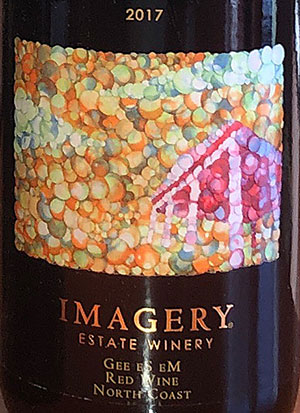 The art adorning this bottle is by Santa Rosa artist Sami Lange. It is one of her paper collage “quilts” that are created by hand cutting, dying, and stitching thousands of circles to create intricate meditative patterns. The fuchsia “Parthenon” arises from a field of orange.
The art adorning this bottle is by Santa Rosa artist Sami Lange. It is one of her paper collage “quilts” that are created by hand cutting, dying, and stitching thousands of circles to create intricate meditative patterns. The fuchsia “Parthenon” arises from a field of orange.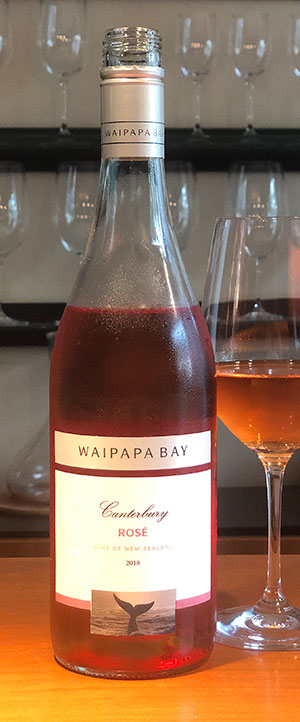 Waipapa Bay Rosé
Waipapa Bay Rosé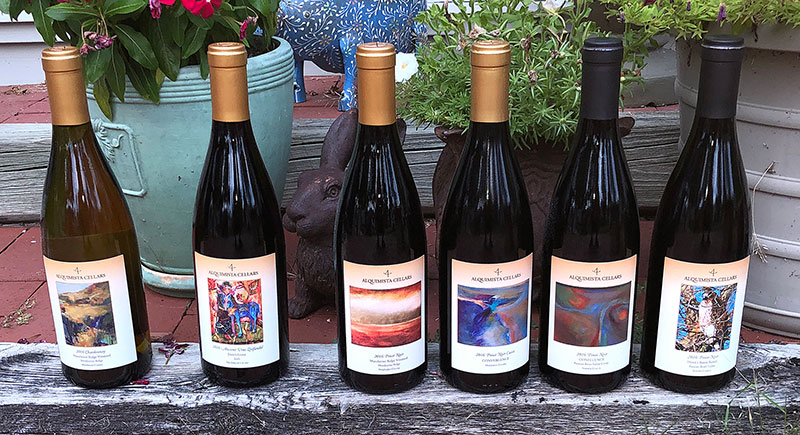
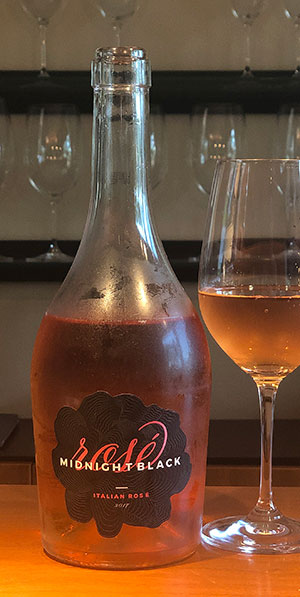 To say that the Taub family is an international wine and spirits powerhouse is, frankly, quite an understatement. It all started on December 6th, 1933, when Martin Taub and his brothers started making brandy in Jersey City. After World War II, Taub started a distributorship in New York because long-time clients Ernest and Julio Gallo needed a partner on the East Coast.
To say that the Taub family is an international wine and spirits powerhouse is, frankly, quite an understatement. It all started on December 6th, 1933, when Martin Taub and his brothers started making brandy in Jersey City. After World War II, Taub started a distributorship in New York because long-time clients Ernest and Julio Gallo needed a partner on the East Coast.